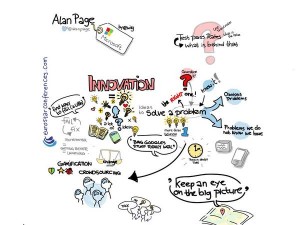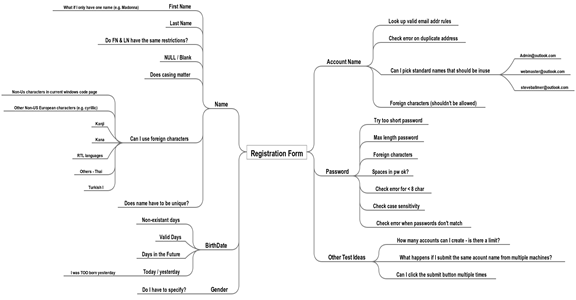Note: no direct information on software testing or software engineering is in this post. This is purely a trip report (that happens to be related to a trip I took to talk about testing).
As I begin writing this, I’m in the middle of a trip to New Zealand and Australia. The main purpose of the trip was a bit of a speaking tour for SoftEd (for the STANZ and Fusion conferences). I gave a keynote and a workshop in Christchurch, NZ on Monday – repeated the same thing on Tuesday in Auckland, and then hopped across the ditch to Sydney to give a talk on Thursday and a workshop on Friday.
Christchurch
Although this trip marks my first visit to Australia, I spent three weeks in New Zealand almost exactly ten years ago. I arrived Saturday morning so I’d have a bit extra time to acclimate to the new time zone, but I didn’t really need it. Through a combination of horrible movie selections and three seats to myself, I managed to sleep quite a bit – and apparently just the right amount so that morning in Christchurch felt a lot like morning in Seattle. The hotel was nice – as far as hotels based on medieval themes go (this being my first medieval themed hotel, I was quite happy). I went for a run, showered, explored a bit, and then went in search of dinner. Although I spent a few days in Christchurch ten years ago, I wasn’t sure how much I’d remember. I also wasn’t prepared for just how devastating the earthquake in February, 2011 was. Nearly two years later, the bulk of the downtown area is still fenced off and unsafe. I found the hotel where I stayed in 2002 (closed), and a restaurant I remember (also closed). The weird part was how dead the downtown area was on a Saturday night. While I wandered around pondering the destruction, I suddenly realized that it was silent. Other than the flap of a few flags and banners in the strong Christchurch wind, there was nothing – complete stillness in an area that was bustling nearly 24-hours a day during my last trip. I eventually found my way back to the area near the conference hotel – apparently where at least some of the liveliness had moved, and found some food.
I was up early Sunday morning and went for a long run in the park. I met up with fellow conference speaker Elisabeth Hendrickson for a coffee run that evolved into a wonderful walking tour of the area surrounding the hotel. We managed to invite ourselves to a tour of a nature walk and had some great conversations about software engineering, testing, and our shared love of walking miles and miles in foreign cities. Although I’ve met Elisabeth before, one of the big benefits of this trip was getting a chance to get to know her better. She has a sensible holistic approach to software engineering that I really like (and unfortunately, don’t see nearly enough of among people in the testing community).
Monday was a blur – I think I went for a run in the morning, gave a keynote later in the morning, and delivered a workshop in the afternoon. Then we all flew to Auckland, where we checked in, and I decided I preferred sleep much more than dinner.
Auckland
Tuesday was more of the same. I changed my talk a bit – I changed the workshop a bit. Not only do I not like giving the same talk twice – I think I’m incapable of giving the same talk twice. I suppose this keeps things fresh (for me, at least). After the conference a group of us had a wonderful fish dinner at a nearby restaurant.
My flight on Wednesday wasn’t until 6:00pm, so I used the morning and afternoon to explore Auckland. I spent quite a bit of time in Auckland (3-4 days) in 2002, and was eager to re-explore. It’s funny how we remember things. There were restaurants and points of interest I remembered quite well (and went in search of a few of them), but it was a bit of a mind trip to notice places and things that I didn’t remember until I saw them (“Oh wow – I ate at this exact restaurant ten years ago…”)
I made a brief stop at the Microsoft Auckland office during my wandering. I knew I wanted to go to Melbourne while in Australia, but I hadn’t bothered to book a flight or lodging yet. Nor did I have any lodging in Sydney after the conference. I took advantage of some peace and quiet and (apparently rare) high-speed internet and got all of my bookings squared away.
Sydney
The Fusion conference was Thursday and Friday. The opening keynote was Emma Langman, and I really enjoyed her talks (she also gave the closing keynote on Friday). Emma is a Change Magician (cool title, huh?), and knows a ton about organizational change and systems thinking. I applaud SoftEd for inviting her, and think she did a great job capturing the essence of the conference and coming up with relevant topics for the audience.
On top of that, I was a bit intimidated that she attended my Thursday session (on customer-focused test design), but managed to keep it together as I babbled for an hour about test design.
Thursday night, we had a dinner keynote from Dr. Peter Ellyard (Australia’s most prominent futurist). I spoke to him for a few minutes before dinner, where he shared this quote that stuck with me:
Vision without strategy is a daydream. Strategy without vision is a nightmare.
(note that this is a variation of a Japanese proverb that replaces the word ‘strategy’ with ‘action’)
After dinner a few of us hung out and had a few more drinks. I have a vague memory of late-night Karaoke, but the details of the night may be forever lost.
Friday morning came quickly, and I gave my last talk of the conference. All-in-all, it was a fantastic experience, and I am grateful to SoftEd for the opportunity.
Saturday morning, Elisabeth Hendrickson and I met up for a sequel walk and talk event around Sydney, culminating with one of the best cups of coffee I ever had (along with a delicious salmon sandwich). I spent the rest of the weekend doing more wandering around town, getting some laundry done, and catching up on work and reading. I did get in a good run through the botanical gardens, around the opera house, and then up and over the big bridge and back.
Melbourne
On Monday, I left for a quick trip to Melbourne. After a few hours there, I was already bummed that I wasn’t spending more time there. I have to admit, that I’m a bit of a foodie, and good food is everywhere in Melbourne. It’s also a beautiful city with a great mix of new and old architecture.
I went for a nice run along the river Tuesday morning, walked around the city some more, and then met with a Melbourne area testers for a few beers and dinner in the evening (as well as some fun conversations).
After breakfast – and a bit more exploring – I headed back to Sydney in the afternoon. My return trip to Sydney had a few obstacles. The first was that for some reason, my domestic flight to Sydney left from an international terminal. This meant I had to go through some extremely long security and passport control lines. I was particularly ‘lucky’ on this trip and was pulled out of line twice for extra ‘checking’. And then it got interesting. For reasons too long to share here, I’ve always gone by ‘Alan’. My credit cards say ‘Alan’, my Microsoft id says ‘Alan’, my email address is alanpa…I bet most people don’t even know that my first name is ‘Donald’. Because I book my flights with my credit card, my boarding passes often (or nearly always) say ‘Alan Page’. I make sure signatures on my license and passport include my middle name, and this has never, in dozens of international trips, ever been a problem – until this flight. The agent questioned me for ten minutes, trying to get me to prove who I was. I think if I was actually travelling to another country, instead of a few hundred miles north, she wouldn’t have let me leave. But eventually, I made it onto the plane and back to Sydney.
Sydney (part II) & Home Again
My final trip to Sydney was uneventful. I spent most of the afternoon reading in a café, and then had dinner, and got some sleep before heading home.
The flight home was long (SYD->AUK->SFO->SEA), but uneventful. I’m home now, and although I managed to catch a bit of a cold, it’s good to be here and get back to my regular routine. My arrival at home was also nearly perfectly timed with a small fire drill at work, and that is accelerating my return to reality as well.
Overall, I had a fantastic time. I expect to return someday (whether it’s for a conference or for a vacation), and hope to meet many more great testers either way.


